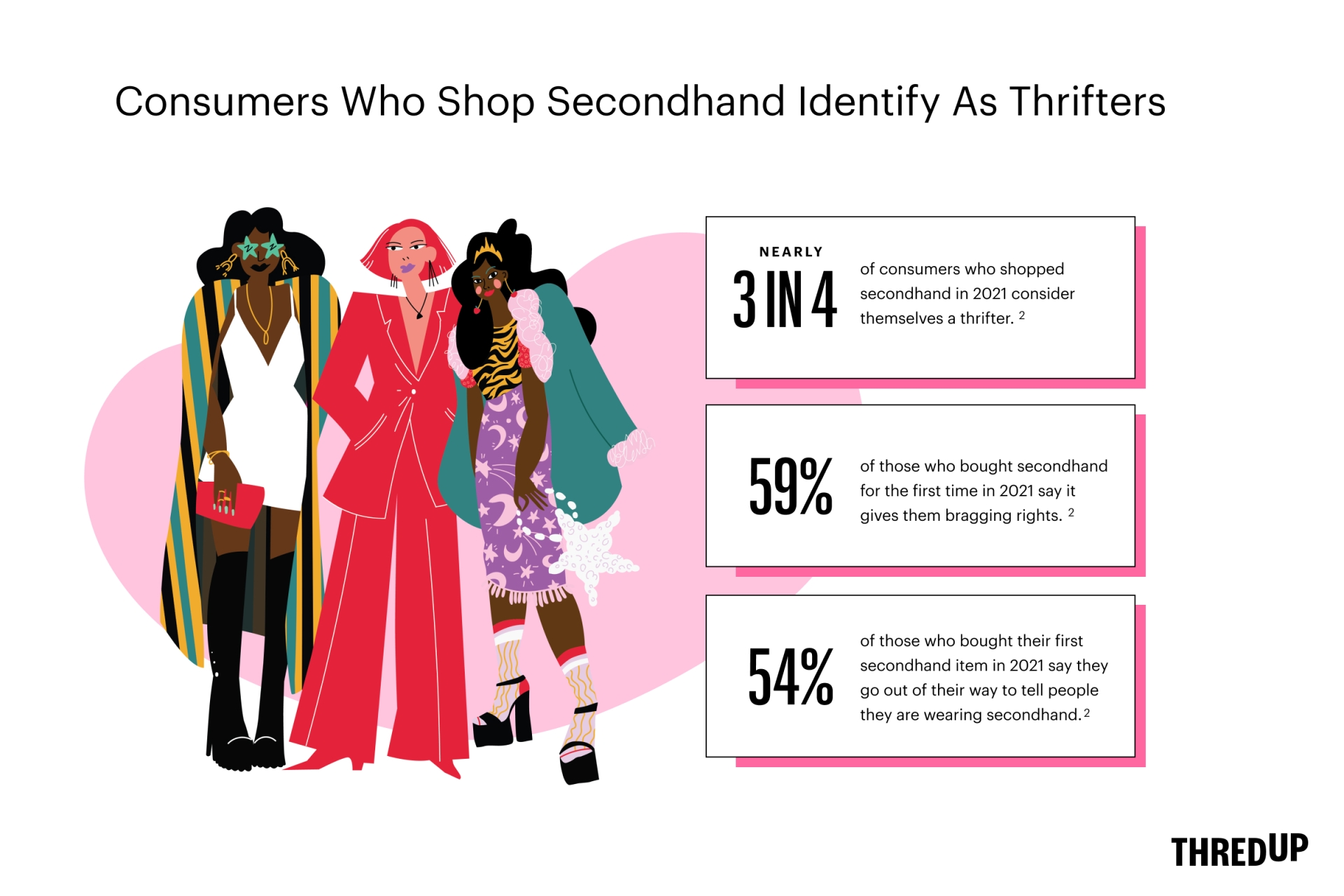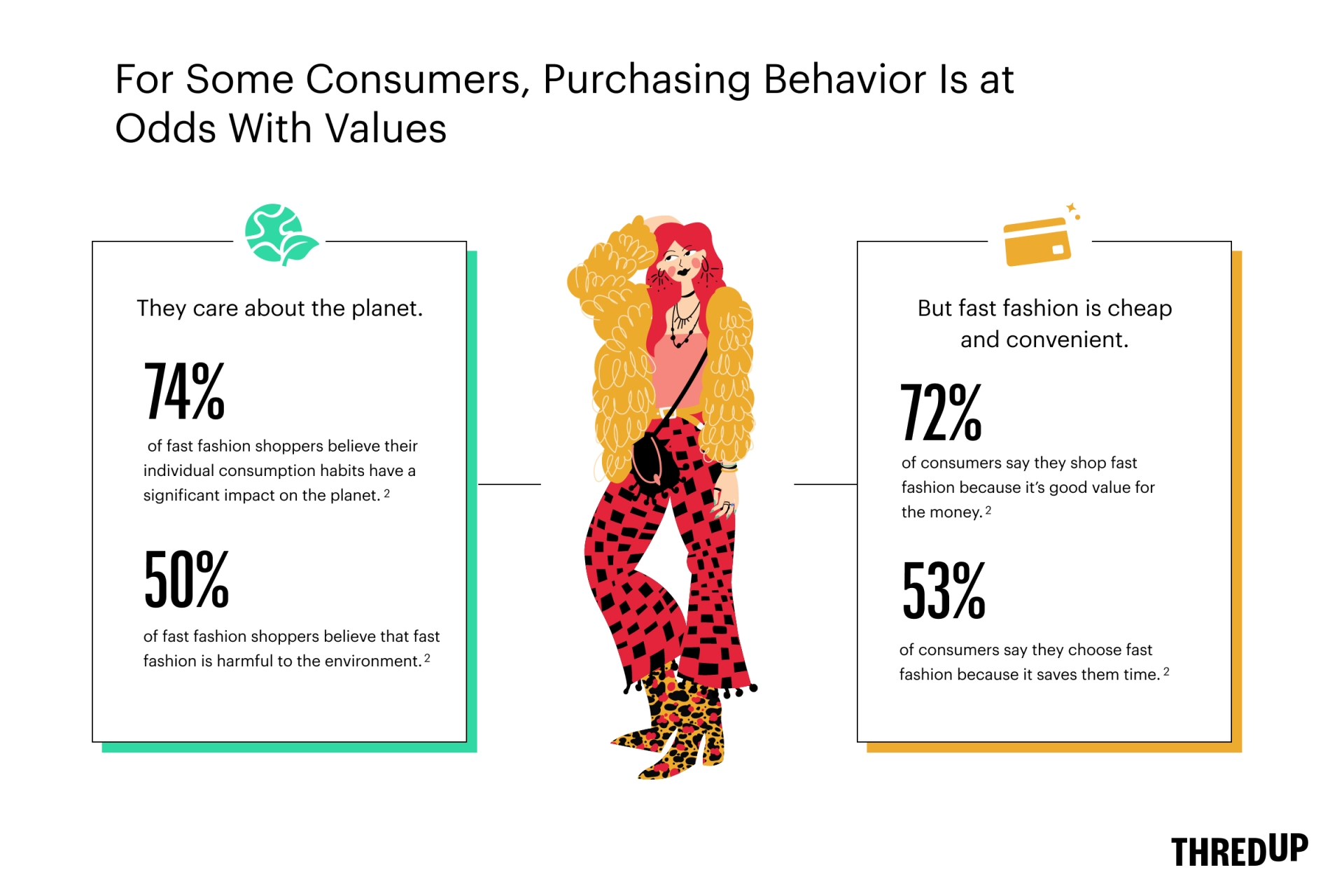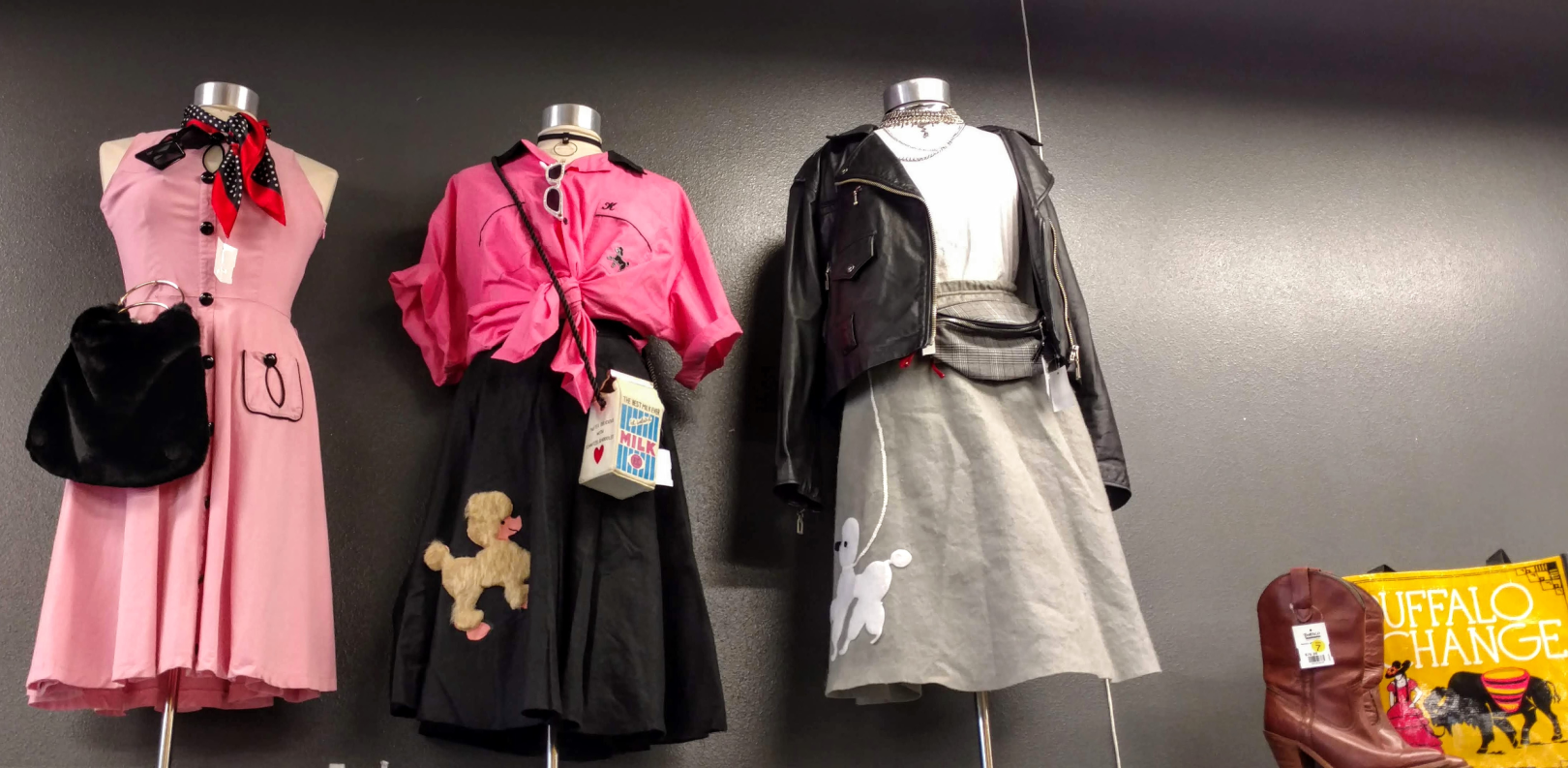The global secondhand clothing industry is gaining momentum with tremendous environmental, social, and economic benefits, nearly doubling its volume in four years, rattling the territory of fast fashion.
Growth in Numbers = a Circular System
The market is expected to grow 127% by 2026, 3X faster than the apparel market with North America leading the pack at 8X faster. In dollars, a forecast of $218B by 2026. thredUP publishes an annual Resale Report with the latest statistics on the secondhand market. From the 2022 report, these stats and others signify an evolution in the fashion industry. 
Each year, EDGE publishes The State of Fashion report by Business of Fashion and McKinsey & Company, but not this year, instead we are providing a different look at the global industry. A look that is not corporate big-brand-retail focus, but more to the heart of societal behavioral shifts in fashion consumption as it relates to the secondhand market.
We’re taking a look at unconventional or alternative retail trends where the value proposition is different than the norm, and a new space is chipping away at traditional retail market share.
The secondhand market has the potential to grow in market share from 3.5% to 23% by 2030.¹
Regenerative, restorative, and renewable business models like secondhand, rental, and repair markets are part of a circular economy because of their methods of circulating products. What we are seeing today is how fast they are penetrating the fashion industry, with a potential to grow in market share from 3.5% to 23% by 2030.¹ They are the alternative to a linear system. Linear is a system that takes resources, makes a new product, and disposes after use, operating as if there are unlimited resources. Secondhand, rental, and repair/remake markets are the “reuse” of a circular system. A circular system operates as if there are finite resources. Make, use, and reuse, aligning with the principles of a circular economy, are designed for products to re-enter after use, never ending up in the landfill. Products are designed and executed to sustain a circular system.
Secondhand is the “Reuse” of a Circular System.
A Global Acceptance
To put it into context, the secondhand trade business is not new. It has been around since the 20th century, primarily used economically to clothe the poor around the world. Today it is widely adopted across all socioeconomic communities, representing a response to environmental issues of waste, abuse of our resources and workers, with the desire to keep already existing products circulated.
The United States is the largest exporter of secondhand clothing. It exports over a billion pounds of used clothing every year. Over 70% of the world’s population use secondhand clothes and Kenya, one of the largest importers of used clothing in Africa, is an example of the impact secondhand clothes can have on the environment as well as economic benefits.
The Institute of Economic Affairs in Kenya released a study (5 March 2021) on the used clothing industry and its contributions to the Kenyan economy. Environmental benefits of the used clothing trade were clear: for every 100 used garments purchased, it means 60-85 new garments are displaced. In turn, that means there is a significant reduction in greenhouse gas emissions and the use of toxins which would have been caused by the production of new textiles. Secondhand supports the Kenyan economy with 10% of the labor force, two million people, working in the industry, and government revenue is generated by licensing fees paid by businesses, many run by women.²
The Chief Executive Officer at the United Kingdom’s Textile Recycling Association, Alan Wheeler, explains that these benefits have the same effect globally: “The used clothing industry will continue to underpin the viability of circular business models for decades to come and supplying used clothing to markets & people wherever they are in the world will be fundamental to achieving the maximum environmental benefits as well as social and economic benefits.”²
Consumers Hold the Power to Counter the Environmental Crisis
Products must be created, designed, developed, manufactured, and packaged to withstand a long life and to be put back into a circular system when the use has expired.
What’s fueling the growth of secondhand? Consumer behavior. More and more consumers are placing a value on the environment they want to live in. They own the power to find ways to address environmental costs associated with textile waste, keeping it out of the landfill, by shifting their consumption behavior. Instead of buying new, they are preferring secondhand first, or second ownership, keeping clothes circulated. One way to start the cycle is to recycle what’s in your closet. That’s where online platforms like thredUp and The RealReal come into play, and offline players like Buffalo Exchange. These companies are examples of the Resale sector which resells used clothing on consignment or directly buys from the consumer, different from the Thrift and Donation sector, like Goodwill stores, that receive donated items. Both are part of the secondhand market.
Retailers, such as Levi Strauss & Co, Patagonia, North Face, REI, PacSun, and Eileen Fisher, to name a few, who take back their own products for resell, repair, or remake are part of a conscious group of companies whose business formula incorporates a circular system by giving a second life to their products. But these businesses are not all circular. To reap the full environmental benefits their revenue must be decoupled from the linear system of new input, new resources and production.¹ Because the framework of how they measure performance is built on sales volume, the take-back program is usually incentivized with store credit or vouchers for the consumer to buy new products (revenue on new products in the system is not circular). Plus products must be durable, made well, and designed to withstand a circular system. This is important – products must be created, designed, developed, manufactured, and packaged to withstand a long life and to be put back into the system when the use has expired. Think of all the cheap fast fashion products. They are not designed to withstand a constant loop. Retailers are up against many challenges to a very complex shift in direction for a sustainable business practice.
Fashion consumers typically buy new, buy more of it, and use less. Over the past few decades production has doubled, the average consumer buys 60% more garments, and they are kept half as long. thredUP reports 1 in 2 people are throwing their unwanted clothes straight into the trash; 64% of the 32B garments produced each year end up in landfill. We need to flip this to buy less, buy better, use longer, and reuse. In looking at the secondhand numbers, consumers are on to this. This growth is not happening overnight but the trajectory speaks to making discarded and unwanted items usable, reducing the unsustainable impact all along the supply chain of new production which generates water pollution, greenhouse gas emissions, and waste.
EDGE has been tracking consumer behavioral studies, as noted in “buy less, but better … notable shift to sustainable consumption”, for some time now. Fashion, as the planet’s third largest polluter, after food and construction, is on the mind of conscious consumers. They are paying attention to how or why we clothe our bodies; are embracing the movement of environmental waste reduction with responsible consumption, caring about the impact the industry has on workers and society; and they want quality and meaning behind each purchase.
Consumers hold the power to make things happen; influenced by their values, survival, the need to protect and be self-sufficient. Generations will vary and it’s complicated on a global scale, but the world aspires towards a circular economy, essential to combat the climate crisis.
The data from thredUp’s 2022 Resale Report supports the power in numbers. The survey was undertaken by GlobalData which surveyed 3,500 U.S. adults. Secondary sources are from internal thredUp customer/behavior data. A highlight of results³:
- 3 in 4 consumers who shop secondhand identify as thrifters and love to brag about it. This is the social aspect of acquiring secondhand clothing. It is now hip to thrift; 59% who bought secondhand for the first time say it gives them bragging rights, while 74% say secondhand apparel is more socially acceptable now than it was 5 years ago.

- To no surprise, the top reason to buy second hand is to save money across all generations. #2 reason for the fastest adopters, Gen Z, to buy is to be more sustainable.
- Consumers are experiencing a conflict of values, secondhand versus fast fashion. Fast fashion is habitual, with consumers feeling pressured to have the latest styles due to social media. They care about the planet but fast fashion is cheap and convenient. 72% of consumers say they shop fast fashion because it’s good value for the money. 74% of fast fashion shoppers believe their individual consumption habits have a significant impact on the planet, while 50% of them believe that fast fashion is harmful to the environment.

- Even with conflicting values, many desire to quit shopping fast fashion. The secondhand market is projected to nearly double the size of fast fashion by 2029, as reported in thredUp’s 2020 report. Two years later, the 2022 report supports that claim, and finds nearly 2 in 3 consumers who shop fast fashion say they aspire to buy more secondhand fashion.
2010 Future Outlook is 2023 Reality
In February 2010, Levi Strauss & Co published a report titled Fashion Futures 2025, where they created four scenarios, exploring the challenges ahead for the fashion industry and its current business models. In 2023 we have met or are in reach of their prediction on all four scenarios, but I call out scenario 2, “Community Couture”, which is an entire section on secondhand clothing becoming a valuable resource. The LS & Co vision is where we are headed. Why, because hyper-consumption behavior is shifting to a more responsible consumption, dictating that we can no longer sustain a buy-and-throw-away culture with no respect for earth’s resources like water and air.
Take a look at the specifics of “Community Couture”. If you were to visit every community on the planet, at least one of the 9 points would fit a community practice today. #1 and #2 are truly happening across the globe. #7 and #8 are today’s Resale platforms.
- The world is… struggling to cope with the impacts of climate change and resource shortages but community bonds are strong – many strive for self-sufficiency.
- Fashion is… expensive new or cheap and second-hand… very high costs of raw materials and disrupted supply chains have resulted in a dramatic fall in the production and sale of new clothing.
- The fabrics we wear are… second-hand, ‘pre-loved’ clothing… community-grown hemp… only the rich can afford ‘certified new’ clothes made from expensive synthetics or virgin raw materials.
- We get our clothes… at vibrant second-hand markets with tailors and stylists on hand, in retail stores with extra security, on the black market or from clothing libraries.
- Clothes are made… at home or in community-run recycling centers linked to local, hyper-efficient factories.
- We care for clothes… using community laundries… one cup of water washing machines… ‘make do and mend’ is taught in schools.
- When we have finished with clothes… we sell them back for reuse to boost our incomes.
- The industry is sustainable through… second-hand clothing becoming a valuable resource… nothing is disposed of.
- Successful fashion businesses are… part of the local community: providing energy supply, education and even food to employees.
NO Season
To those of you wondering, with a robust secondhand market, where does that leave emerging and established designers who are creating new. We need to move to creating “No Season”, seasonless collections that are designed to live eternally in a circular system. Create fewer collections that are timeless and not season specific. Scarcity can fuel demand so drop the name ‘collections’ and call them editions. Fashion, as collected editions defines longevity in support of a circular system. With the surge of rental and secondhand markets, season-less, timeless pieces will add value and recyclability once they end up in these markets, and, from “Fashion Futures 2025”, they will be coveted.
Notes:
¹Rethinking Business Models for a Thriving Fashion Industry, Ellen MacArthur Foundation
²Discover The Truths About The Used Clothing Industry, Secondary Materials and Recycled Textiles (SMART) Association
³2022 Resale Report, thredUp
Further Reading:
Fashion and the Circular Economy, Ellen MacArthur Foundation
Fashion Futures 2025, Global Scenarios for a Sustainable Fashion Future, Levi Strauss & Co., 2010
Aja Barber, “Consumed, The Need for Collective Change: Colonialism, Climate Change, and Consumerism”, Hatchet Book Group, 2021.
Feature photo: Buffalo Exchange secondhand store, Ventura, CA.

